| To Sample or not to Sample: That is the Question |
Marcy Petrini
September, 2022
I am a big proponent of sampling. I sample for my Pictionary©, my teaching, and my other writing. I also sample yarns I haven’t used before, or yarns I haven’t used with a structure I am planning. I sample color combinations on warps for my scarves and shawls.
There are two circumstances when I don’t sample. One is when I am familiar with the yarn, and I plan to weave the same type of structure I have woven before. The other is if I have a special yarn in limited quantities.
When I start a project with a familiar yarn, I know the sett, and I can calculate the width and length on the loom. This is because for every project I measure the finished dimensions off the loom and then again after wet finishing. I like to measure take-up and shrinkage separately because I believe that they are the results of two different processes.
The take-up is from the geometry of the cloth. The warp is straight on the loom, the weft is straight when we place it in a shed. However, to be incorporated in the cloth, the threads must go over and under each other in paths that are no longer straight, as shown in the diagram below.

Some structures have more take-up than others. Think of honeycomb vs. plain weave. Width-wise there can also be drawn-in from the weaver; if we don’t leave enough weft in the shed for its undulating path in the cloth, the warp edges are pulled in by the weft.
Shrinkage is a function of the fiber as well as how we wet finish the piece. For example, given a cloth of unmercerized cotton and another of mercerized cotton, the first will shrink more than the second, even if the take-up was the same.
After weft finishing, I look at the hand of the fabric to determine whether the sett and beat were the best for my intended use of the cloth. In the future I can use that information to plan accordingly.
If I have a yarn of limited quantity and I am not willing to sample, I approach it with three goals in mind. First, I research it as much as possible to see how it compares to other yarns I have used in the past. Second, I am willing to change plans mid-course. Third, I know that the final product may not be the best, but hopefully it will be good enough for its intended use and a good learning experience.
A recent project shows my approach to not sampling.
This past spring, I received as a gift from a dear friend a yarn called Rose by CarrPark Artisans. The yarn is a rayon made with rose petals, a totally new yarn to me! The yarn’s colorway is Rosy Outlook, variegated pink, blue, purple and gold. It is not pastels, but not very bright either, a wonderful mix reminiscent of spring.
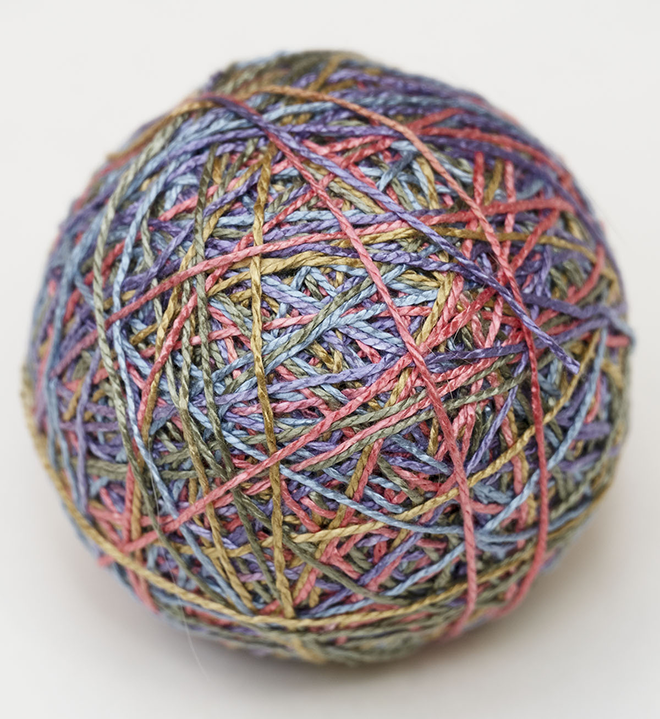
The yarn is labeled 5/2 and since rayons follow the cotton system, I believed that the range for sett may be 12 epi for drapey plain weave all the way to 24 epi for an unbalanced twill. Next, I searched the website for more information and that’s where I found that the yarn had been discontinued. Now my thinking changed. I had 1,000 yards, enough for a warp for two scarves, but if I sampled, I wouldn’t have enough for the second scarf. My compromise was to weave a scarf as a “sample” and then weave a second making any necessary adjustments, There would be more work involved, but not much loss of thread because I would have to leave enough warp between the two scarves for fringes and that’s pretty much what is needed for loom waste.
I didn’t want the colors of the yarn to be too diluted by the weft. I thought of using the sett close to the wraps per inch, and then using a much thinner weft. I have done that with other yarns and the pieces have drape if the sett is not too close and if the weft is not a dense yarn.
Here is an example from my rigid heddle, still in progress. The warp is a brushed silk and the weft is 10/2 bamboo from SWTC which has been on a shelf for a while. The warp variegation is not mixed by the weft.
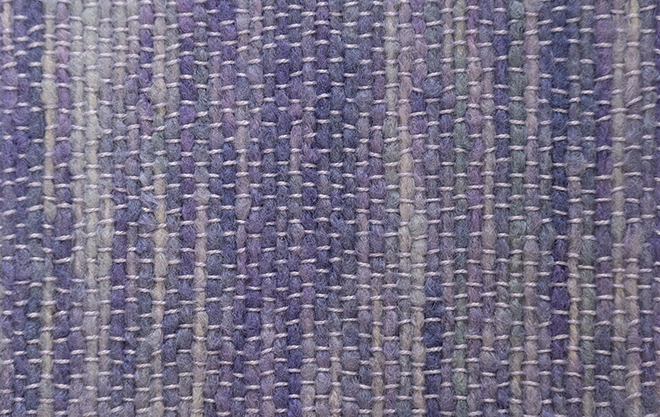
For the Rose yarn, I had these parameters in mind. First, a rather close sett at 24 epi for the warp, so it would be less visually blended by weft. Second a thin weft for the same reason; I thought a 20/2 silk would work, and silk has good drape.
Third, because the yarn is shiny, it would benefit from a twill with uneven lengths of floats, and twill lines with different directions. The pattern wouldn’t be visible because of the variegated warp, but the twill will reflect the light at different angles making the fabric shimmer.
I chose the extended interrupted pointed twill below. By tying treadle 5 same as 3 and treadle 6 same as 2, the treadling is easy, going from 1 to 6.
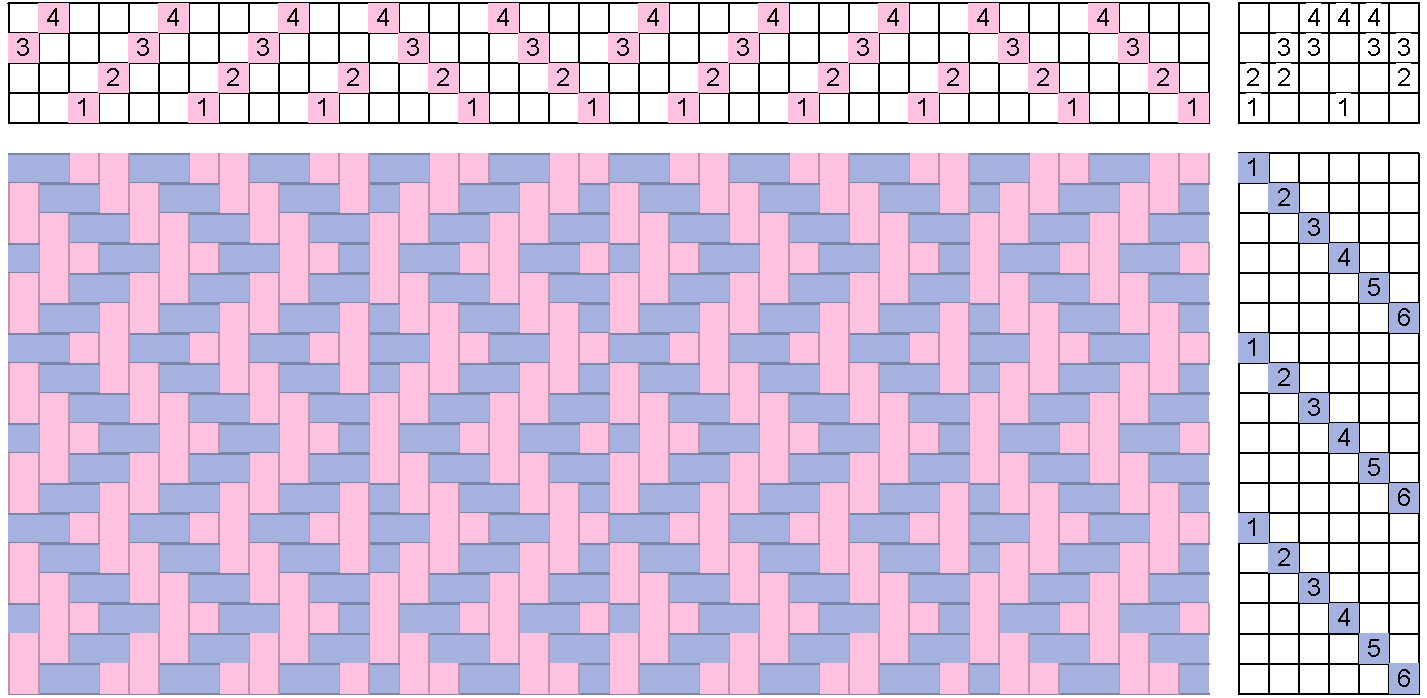
I chose a lilac 20/2 silk that compliments the warp, and the weaving finally began. After a few inches, it was clear that this project wasn’t working. I have woven warp dominant scarves and shawls before with good success. I have used wool, cotton ribbon, 5/2 silk, among others, but always in plain weave. I am not sure whether the problem here was that the warp is dense, the structure is a twill, making the fabric heavier, or the difference between warp and weft is not enough. The fabric looked fine, but it just didn’t have enough drape, I could tell by feeling it.
No sample, so my goal number two for this project was to change course. I thought of several options, slept over it and finally decided that the only way it would work for what I wanted was to unweave, untie, undo the hem, and re-sley the warp at 18 epi which is generally a good sett for a 5/2 yarn in the cottons system. To preserve the colors, I would have to use the same yarn for weft.
This is not ideal but to save on the yarn, I used as part of the weft the left-over warp yarns from the re-sleying.
Here is the final scarf, followed by a close up.
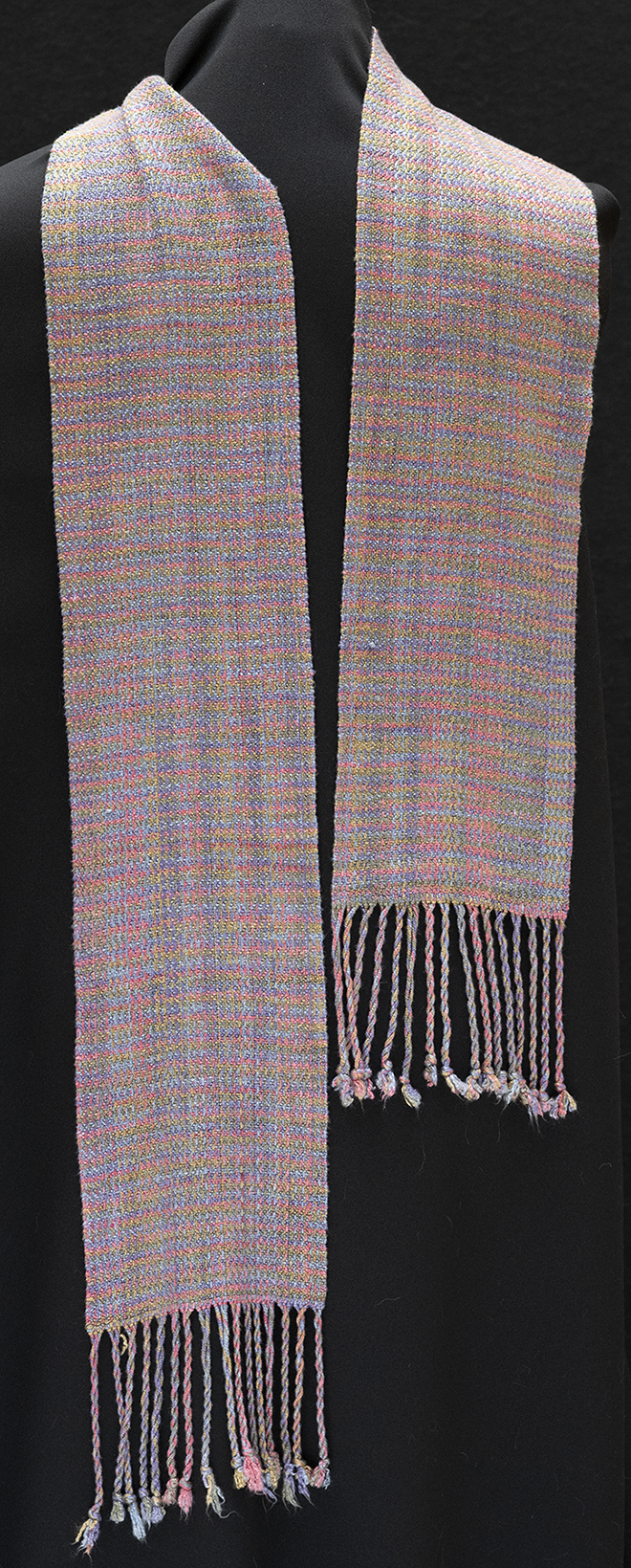
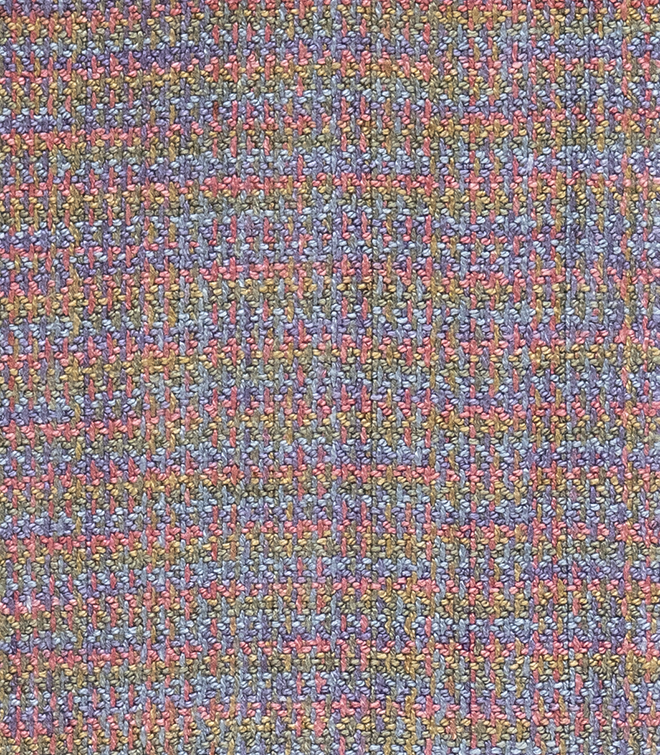
Despite changing course, I like the scarf. It has good drape, and the colors are unmixed. I often use a variegated weft with a variegated warp, sometimes different yarns. I don’t try to have the yarn be continuous. I like the serendipity of the random stripes.
Would have been better to sample? Maybe and maybe not. I learned a lot about the yarn this way, and it may have taken more than one sample to arrive at a solution. I do have enough yarn that I can use for a future project which I need to plan carefully.
Next time you are faced with the decision to sample or not to sample, think about this process and whether it would work for you.
Happy Weaving!
Marcy
